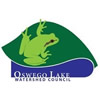Springbrook Creek Riparian Buffer Project
The Springbrook Creek Riparian Buffer Project began in 2021 and is funded by Oregon Watershed Enhancement Board’s small grant program. This stretch of Springbrook Creek has been unvegetated in patches, leading to erosion, lack of habitat, and lack of riparian shade. Existing native plant communities were threatened by invasive species. The Twin Fir Rd property is 1-acre residential property adjacent to an existing OLWC project site (Hope Community Church). Most of the site is classified by the City of Lake Oswego with Resource Protection sensitive lands designation.
In 2021, volunteers, contractors, and staff have focused on removal of invasive species to prepare the site for native planting and seeding. Invasive species removed include Ivy, Armenian Blackberry, English and Portuguese Laurel, Invasive Cherry, Creeping Buttercup, Shiny Geranium, Garlic Mustard, and Tansy Ragwort. Some invasive plants on site, such as garlic mustard, can aggressively outcompete native species and are allelopathic. Other invasive plants such as English laurel provide streamside shade but encroach on native plants that provide better habitat for native wildlife. Tree ivy was a threat to existing tree canopy, and much of the riparian area vegetation consisted of only non-native grass and weeds.
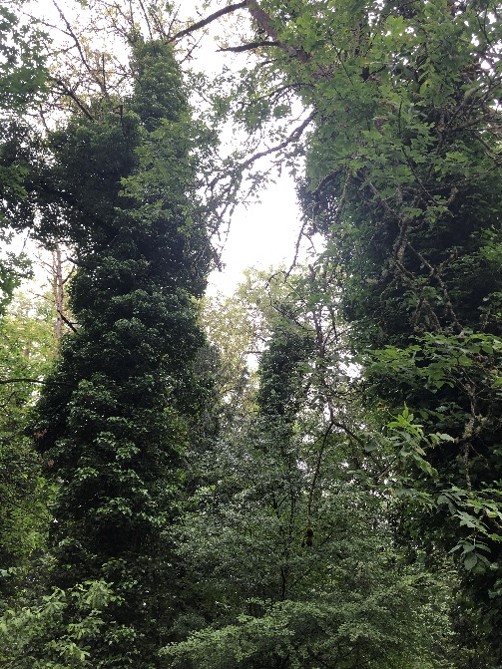
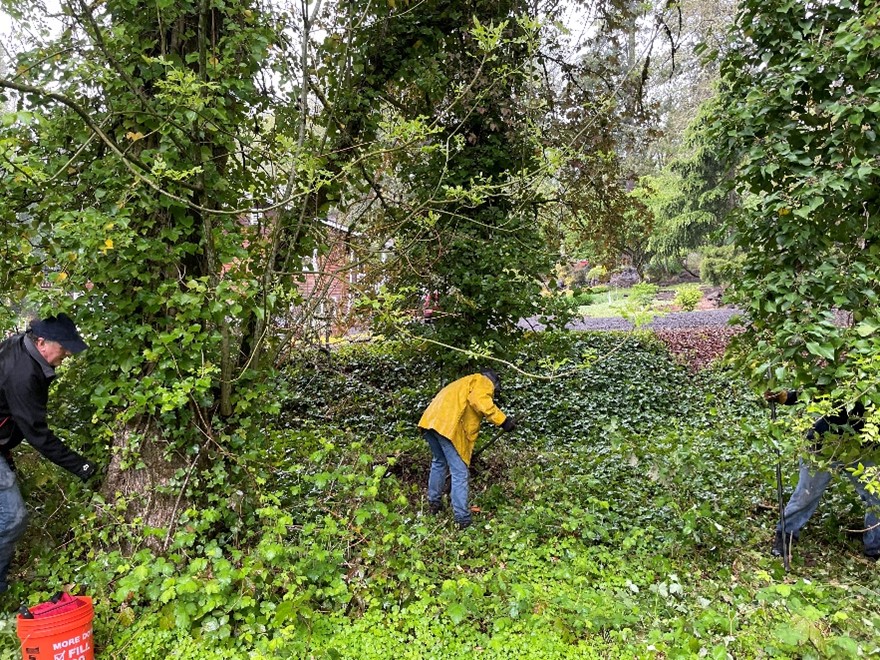
Volunteers work to remove tree ivy for Arbor Day 2021
As we move into 2022, we will continue removing invasive plants and begin revegetation. We plan to plant and maintain a strong riparian buffer to increase channel stability and reduce erosion, increase short-term and long-term shade, and improve wildlife habitat. Native plantings will include Douglas Fir, Big Leaf Maple, Western Red Cedar, Chokecherry, Cascara, Osoberry, Ninebark, Red Elderberry, Douglas Spirea, Serviceberry, Oceanspray, Red Osier Dogwood, Common Snowberry, Willow, and Tall Oregon Grape. Over 1000 plants will be installed and mulched with wood chips, and we plan to seed the riparian section of the project area with native riparian seed mix. Native plantings filter runoff, develop root systems to retain soil, and provide habitat for wildlife. We will have volunteer opportunities (planting, weeding, mulching, monitoring, and seeding) throughout 2022 at this site, so email jack@oswegowatershed.org if you would like to lend a hand!
Village on the Lake
Oswego Lake Watershed Council has worked with Village on the Lake Homeowners Association since 2019 to restore habitat on a 2.2 acre commonly owned natural area. This project was funded through a Oregon Watershed Enhancement Board small grant, and we recently completed the active phase of this project.
Pre project site conditions: A perennial tributary, Lily Pond Creek, begins at the top of Tract C from a small spring, and stormwater runoff from homes and streets above. During normal flows, a small wetland area slows and filters water, but in heavy precipitation events there is erosion of soil and flooding near homes. This nutrient and sediment loss is believed to negatively impact the water quality of Lily Bay and Oswego Lake downstream. English Ivy is the dominant ground cover, and its shallow root system contributes to the erosion problem. The dominance of Ivy, paired with growing populations of clematis, blackberry, holly, garlic mustard, and lesser celandine has replaced most herbaceous native plants and created sections of Tract C with no native shrub understory. The abundance of invasive plant species and lack of heathy native understory has a negative impact on habitat and forage opportunities for wildlife.
To address the problems detailed above, we removed invasive species throughout the 2.2 acre site, and replanted and seeded the area with native species. We primarily removed patches of invasive plants through manual and mechanical methods, and utilized herbicide in some instances to remove persistent weeds. Invasive species removal was conducted by OLWC staff, volunteers, and Wisdom of the Elders LLC. Volunteers contributed over 450 hours of their time removing weeds, coordinating with landowners, planting, maintaining, and monitoring restoration efforts.
In addition to planting over 200 native shrubs and trees, we seeded a variety of herbaceous native species to create greater biodiversity and to prevent erosion. We also installed 150 fringe cup and 1200 plugs of rushes and sedges. Now that invasive species removal and replanting have been completed, we see a healthier, more complex natural area with mixed habitat types (upland, riparian, wetland). This area will support increased plant and animal biodiversity, provide habitat and aesthetic value, stabilize soil and filter stormwater.
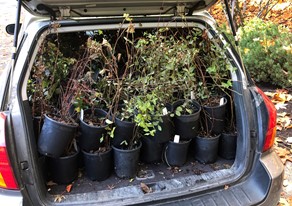
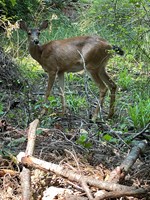
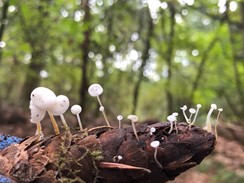
(Camassia leichtlinii)
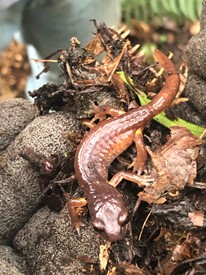
Ensatina eschscholtzii
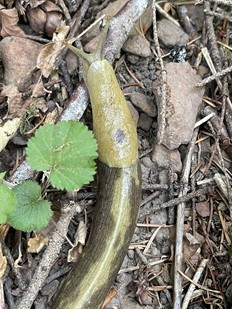
(Ariolimax columbianus)
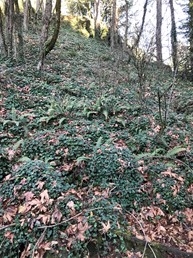
2019
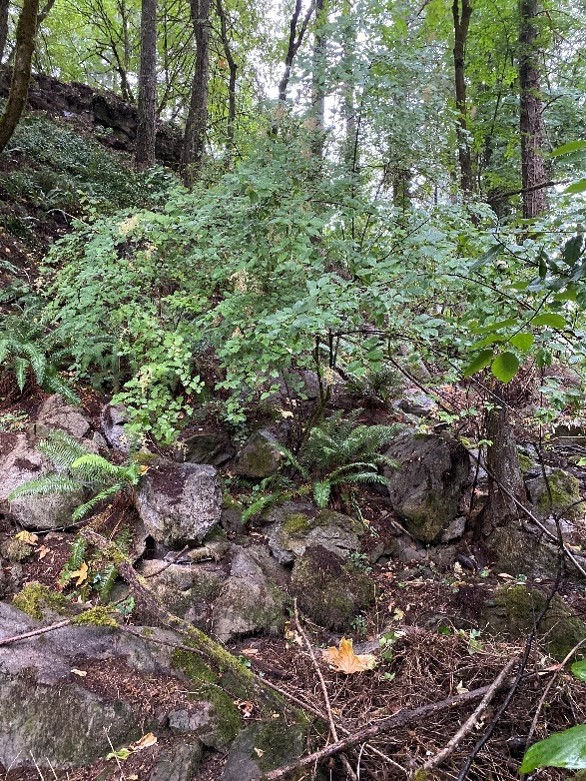
2021
Wells
The Wells property is a privately owned, 1-acre residential property near two existing OLWC project sites (Gans and Yates) and Hallinan Woods. Most of the site is delineated as Resource Protection (RP) and Habitat Benefit Area (HBA). Maturing Douglas Fir and Cedar canopy was threatened by tree ivy, and the forest understory was dense with ground ivy, laurel, cherry, and holly. In 2020 we began working to remove these invasive species and replant the understory with natives, which will promote long term shade, encourage forest succession, reduce erosion, and improve wildlife habitat. Due to proximity of the Wells site to existing OLWC Project sites and City owned Hallinan Woods along Hallinan Creek, this project is enhancing the wildlife corridor and sensitive lands.
Since the project began staff and volunteers have removed significant patches of English ivy, including girdling all tree ivy on site. We have also cut and stump treated around 75 invasive shrubs, including laurel, holly, and ornamental cultivars. We are now planning for further planting and seeding of cleared areas with native shrubs and trees to supplement the minimal native shrubs that are currently present. The planting palate will include native plants such as Douglas fir, big leaf maple, Western red cedar, cascara, osoberry, ninebark, elderberry, sword fern, salmonberry, oceanspray, snowberry, and Oregon grape. Our invasive removal and replanting work will stabilize the stream bank and promote heathy native riparian vegetation. Woody debris from invasive shrub removal will be chipped or otherwise left on site to provide nutrients and habitat. While removal of invasive plant populations has been a key aspect of this project, our planting work will increase structural diversity of native plants within the riparian forest and encourage healthy forest succession.
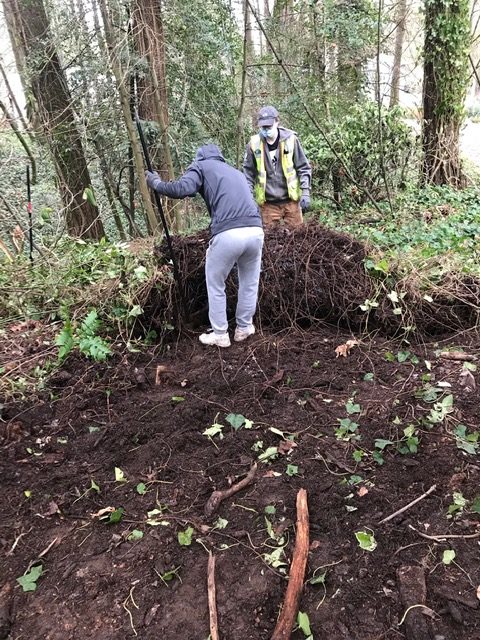
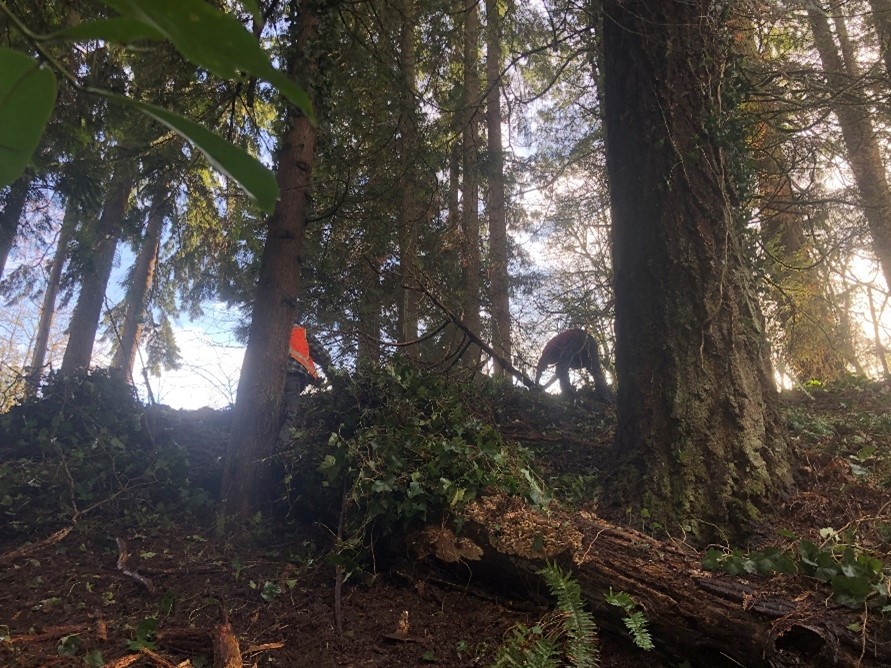
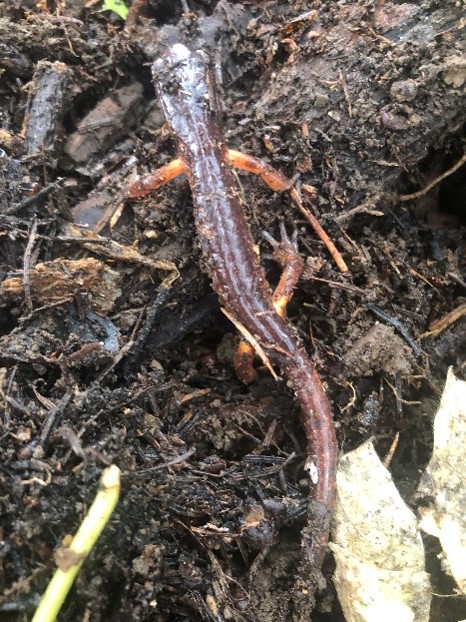
Ensatina eschscholtzii
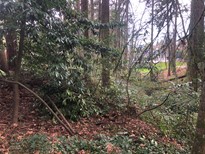
December 2020, before laurel removal
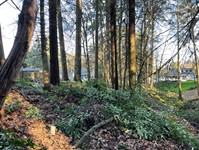
Dec 2021, after laurel removal
Westlake Oak Woodland
Since 2018, the Oswego Lake Watershed Council in partnership with the Westlake Homeowners Association, the City of Lake Oswego, and Clackamas Soil & Water Conservation District have been actively involved with a 17-acre parcel of oak woodland located along Kruse Way and Westlake Drive in the City of Lake Oswego. This unique habitat is one of the remaining few intact oak woodlands in the area, containing a healthy stand of 300+ mature oak trees in the overstory with native ash, Douglas fir, and big leaf maple in the sub canopy. All project partners have contributed financially to this work, and provided technical and management support.
In addition to oak woodland habitat, Westlake is home to wetland and riparian habitat with Centerpointe Tributary and Meadows Creek flowing into Carter Creek. Ongoing habitat enhancement along waterways improves water quality and biodiversity. Within the site, 2,500 feet of streambank are under active restoration (5,000 if counting both sides of the creek). This translates to at least 150,000 square feet of riparian buffer under active restoration.
Since 2018, about 90 percent of invasive species cover at Westlake Oak Woodland Tract A has been removed. Species removed include English Ivy, English Laurel, European Holly, Himalayan Blackberry, Lesser Celandine, English Hawthorn, Herb Robert, Nipplewort, Shinny Geranium, Ivy-leaf Cyclamen, Italian Arum, Reed Canary Grass, Sweet Cherry, and Variegated Yellow Archangel. Over 1000 lbs of trash have also been removed from the project area.
620 native shrubs and small trees have been planted and maintained so far, with more planting to come this winter. Species planted so far include Amelanchier alnifolia , Cornus sericea, Prunus virginiana, Rhamnus purshiana, Rosa gymnocarpa, Spiraea douglasii, Holodiscus discolor, Mahonia aquifollium, Philadelphus lewisii, Physocapos capitatus, Polystichum munitum, Rubus parviflorus, Sambucus racemosa. Throughout the project, community volunteers have contributed over 900 hours of their time restoring, monitoring, and maintaining the project site. We have also worked with Wisdom of the Elders interns and Summerworks interns, who have spent 360 hours stewarding Westlake.
In January, February, and October of 2021 our contractors Native Ecosystems NW, Arboriculture International, and supporting arborists completed permitted treatments on 201 native trees to improve the health of the oak woodland. Work was supervised by OLWC staff and supported by volunteers, board members, and CSWCD staff. The 201 trees (199 ash, 1 douglas fir, 1 cherry) were girdled, felled, fractured, or crown reduced. By removing competing trees, the oak woodland will provide an environmental niche for obligate species, floral and faunal, within this 17-acre parcel that rely on less dense canopy coverage. By leaving native tree species in snag formation, additional hibernaculum habitat is created for various bird, mammal, and insect species and lateral branching of oak will provide hibernaculum as well. Felling treatments have created downed wood in the project area, which results in a more dynamic ecosystem with complex structures. The downed wood will break down at varying rates over time and support healthy soils.
Westlake Tract A is a dynamic, biodiverse natural area in Lake Oswego. Removal of invasive species and concurrent selective tree removal for Oak release is improving habitat and ecosystem health. Improvements to the composition of ground cover, understory, and tree canopy are coming together in a beautiful way. This project has been a community effort, with community members, students, neighbors, stakeholders, local government, and community groups collaborating to achieve our vision of healthy, properly functioning watersheds. This includes streams, wetlands, forests, and other natural resources working together as a sustainable ecological system. A properly functioning watershed supports a healthy community, good water quality, productive habitat for native plants and animals, and enhanced quality of life. Join us for a scheduled volunteer event, or contact jack@oswegowatershed.org if you would like to set up a volunteer event for larger groups (such as business groups or student groups). We plan to wrap up most of our restoration work in 2022, then expand to nearby oak restoration projects! Keep an eye out for more photos, maps, and videos in 2022.
Learn more about Westlake Oak Woodland at https://arcg.is/0HfnDC0
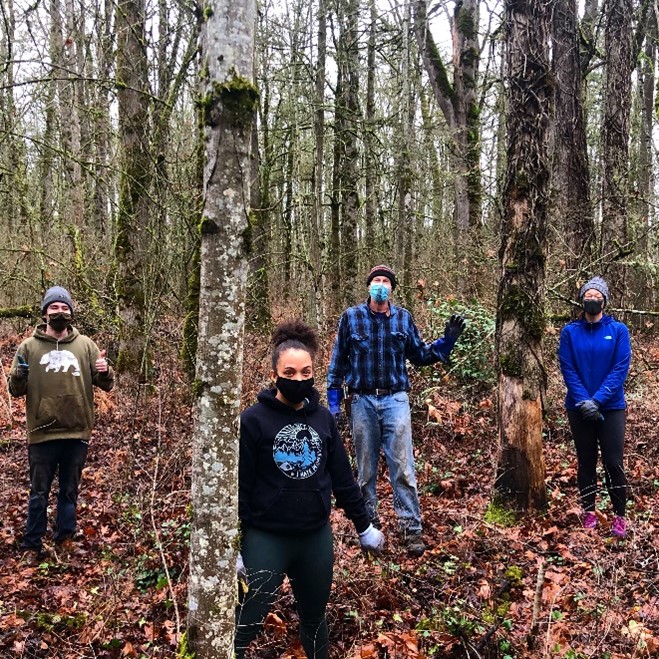
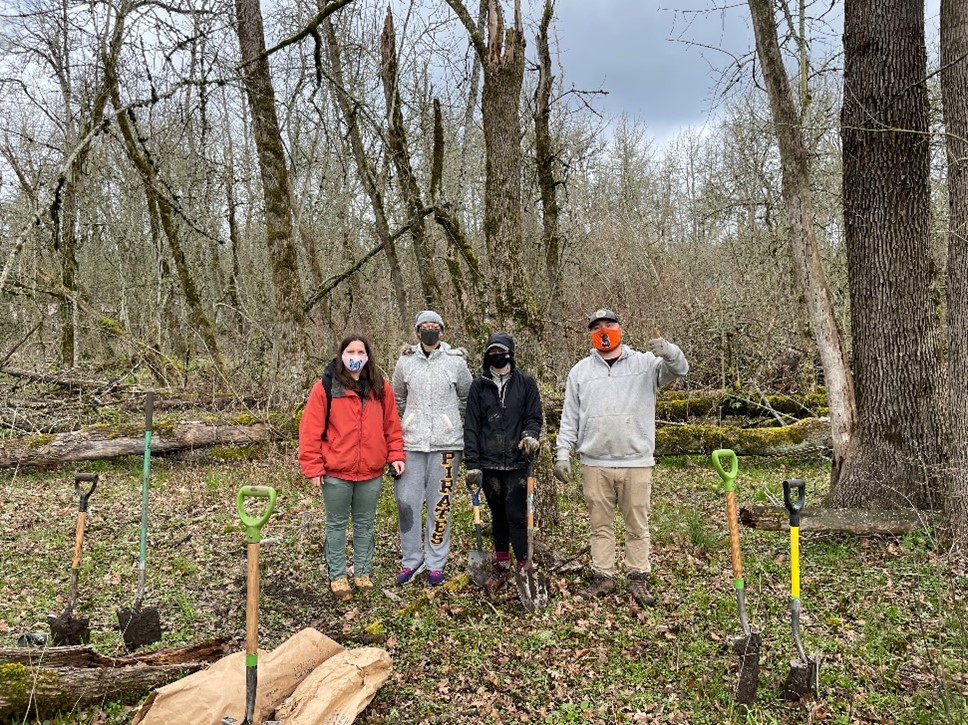
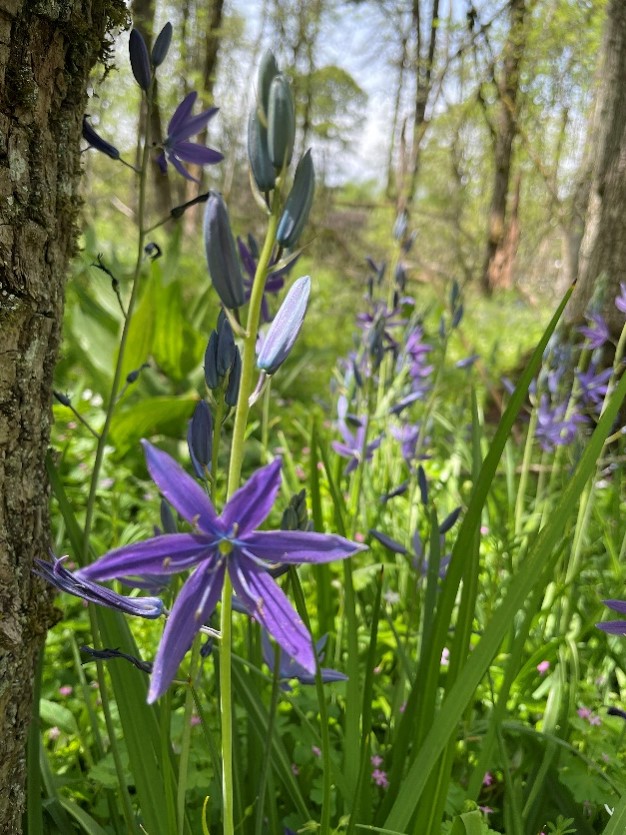
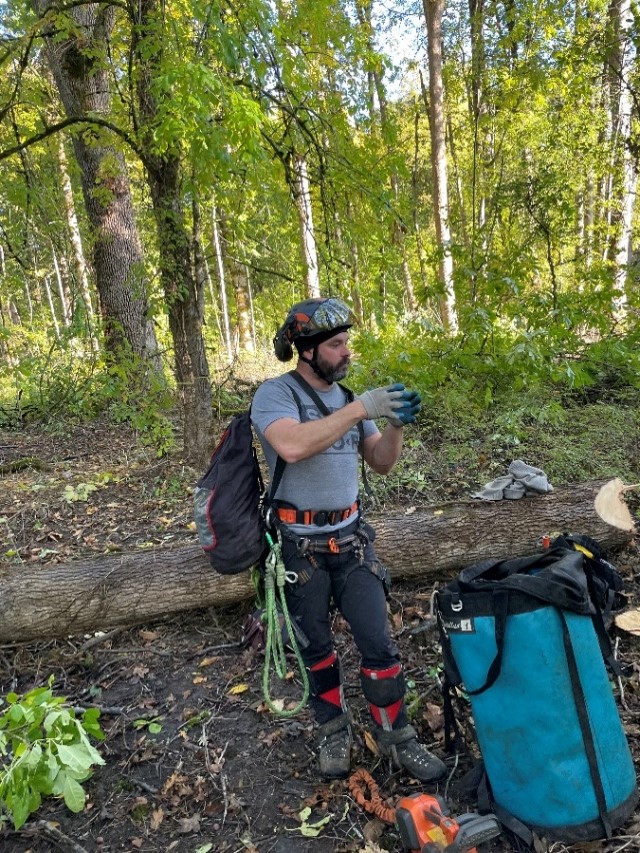
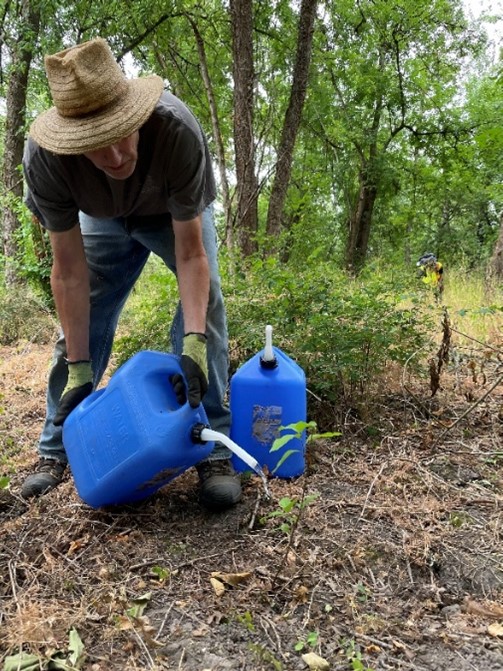
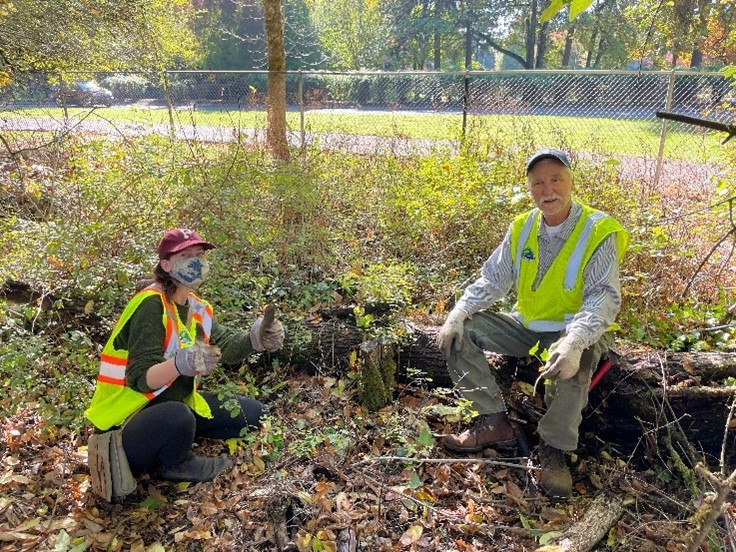
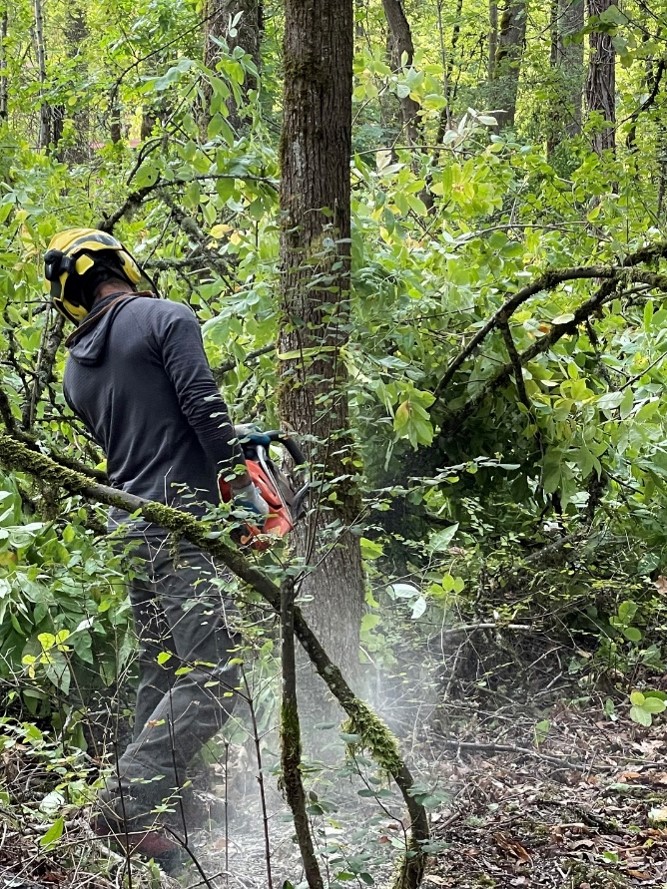
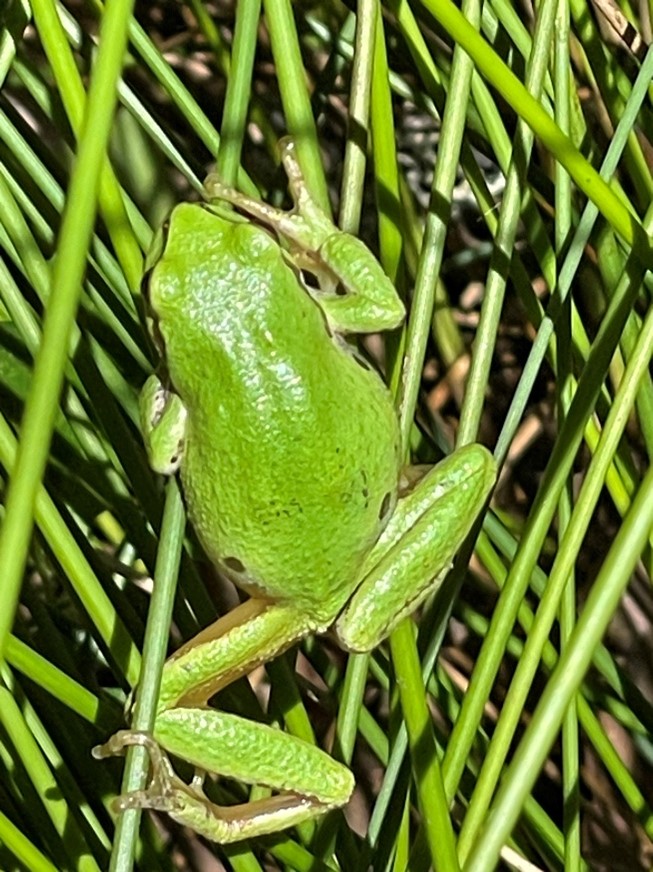
(Pseudacris regilla)
